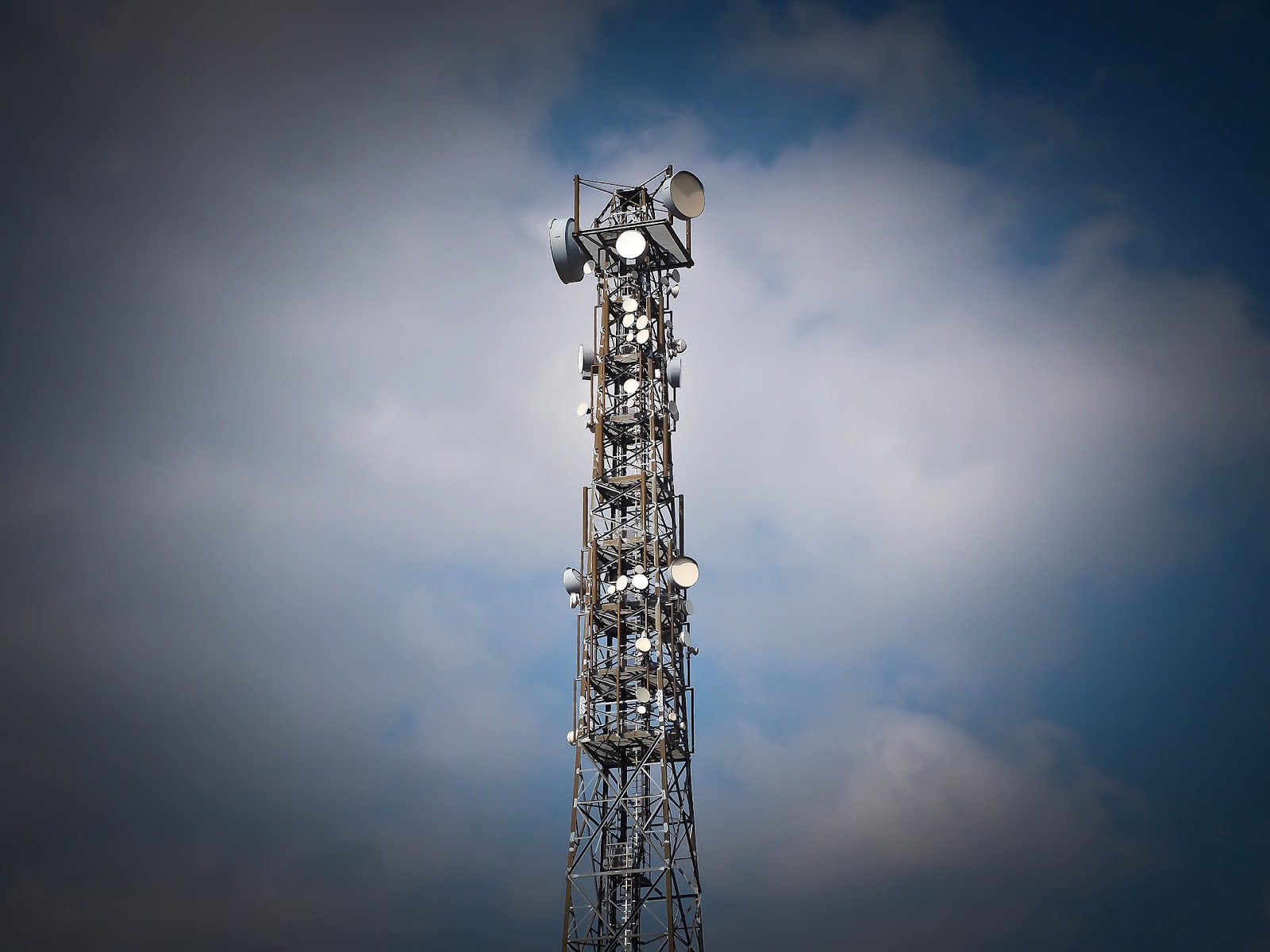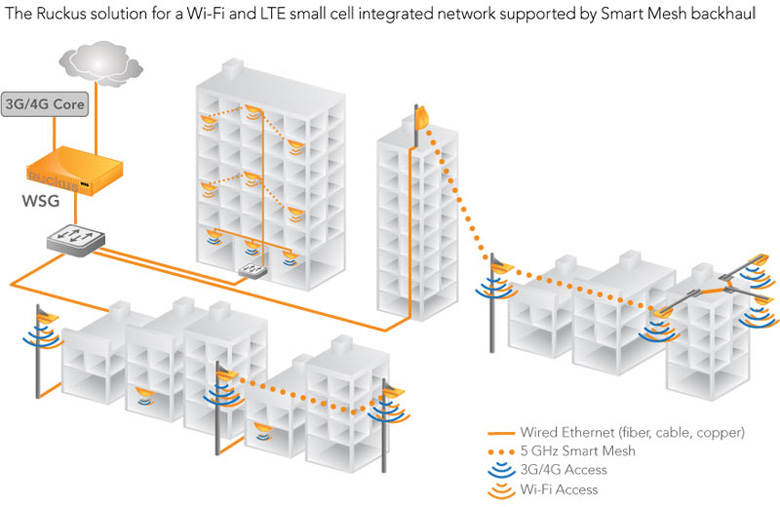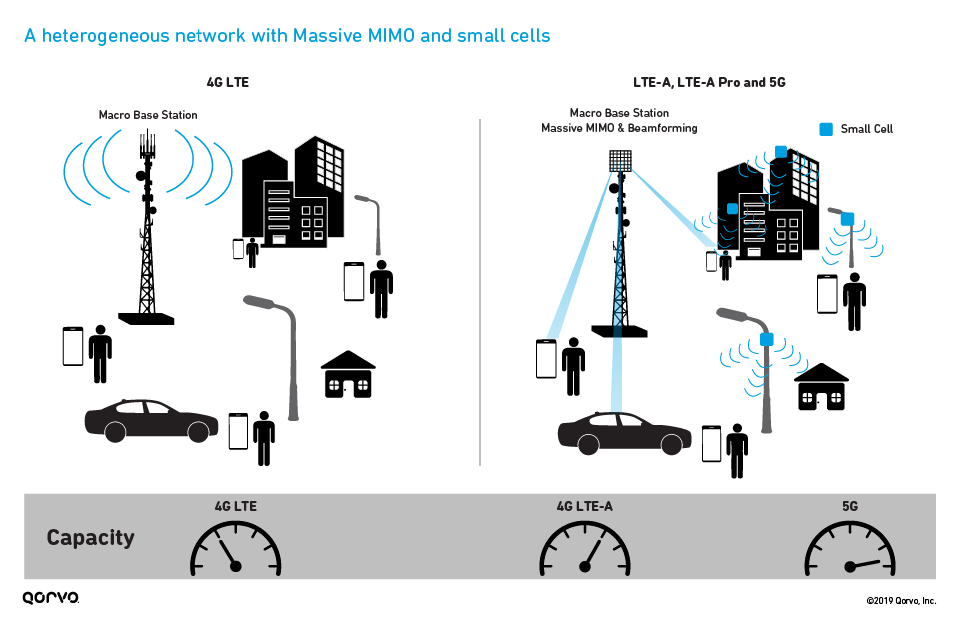Computer networks that are not connected by cables are called wireless networks. What is a small cell in LTE.
An overview of the tutorial.

. This page describes 5G Small Cells Basics including 5G Small Cell Types. As people use more data network connections become slower and there are more issues with connectivity. 5G uses higher frequencies such as millimeter waves which gets blocked due.
Introduction to small cell networks Introduction and key challenges Part II. Heterogeneous small-cell networks HetNets are considered as a striking solution to the. Wireless coverage may already exist in an.
Additional Wireless Density. Evolutions towards small cellHetNet. I enjoy reading your blogs to learn about things like small cell architecture Nokia small cell solutions and Nokia small cell specifications.
So while tall high-power macro towers keep the network signal strong across large distances small cells suit more densely developed environments like cities. In this tutorial we provide a brief overview on SCNs while highlighting key challenges associated techniques and future landscape. Small Cell Technologies in LTE-Advanced and Beyond.
They are small compared to a mobile macrocell partly because they have a shorter range and partly because. Tutorial Introduction to Small Cells Small Cell Access Mechanism Suitable Spectrum Bands In-building Signal Propagation Characteristics Network Capacity Background Spectrum Accessibility o Direct Approach - Spectrum Extension o Indirect Approach - Dynamic Spectrum Sharing DSS o In-Building Small Cell Base Station Architecture. Understanding capacity scaling in wireless cellular networks Some noteworthy trends their benefits and drawbacks Part II.
Small cell backhaul Part 5. It also mentions advantages of 5G Small Cells and their popular manufacturers. International workshop on small cell wireless networks SmallNets in conjunction with IEEE ICC 2013 and the forthcoming 3rd workshop on small cell wireless networks SmallNets in conjunction with IEEE ICC 2014.
Evolutions towards small cell and HetNet Part 2. In this tutorial we provide a comprehensive overview on SCNs while highlighting key challenges associated techniques and future landscape. Wireless Small Cell Networks.
Introduction to small cell networks Introduction and key challenges Part II. As we know cellular networks use high power Base Stations ie. Ultra-dense small cell networks A new paradigm in network deployment.
A detailed breakdown of the tutorial is as follows. Interference management Interference in a heterogeneous small cell environment Emerging techniques for interference management P IV. What are the prospects of microwave and millimeter wave transport networking platforms for small cell backhaul and C-RAN fronthaul.
Cell towers have a limited density. At their core small cells are wireless transmitters and receivers designed to provide network coverage to smaller areas. Small cells play a critical role in Long-Term Evolution networks as smalls cells are self-organizing and constructed on layers with macrocells.
Tools for small cell and HetNet deployment. How important is small cell technology for 5G. Tutorial T-9BackhaulFronthaul Technologies for Heterogeneous Small Cell Networks.
A detailed breakdown of the tutorial is as follows. Will mobile operators adopt WiGig and other non-3GPP technologies to complement 5G network rollouts. Tutorial Overview Next-generation wireless systems are characterized by three key features.
Small Cells are compact and low-powered base stations that operate in a wide range of frequencies depending on the. ExteNet Systems Densifies Wireless Carriers Networks with Small Cells. Recently he gave tutorial presentations at.
A wireless network is like a highway system More wireless traffic needs more wireless facilities just like more vehicle traffic needs more lanes. PresentersMuhammad Zeeshan Shakir Carleton University Canada and Mohamed-Slim Alouini King Abdullah University of Science and Technology Saudi Arabia Tutorial Overview. Small cells are always connected by fiber optic cable and usually attached to existing infrastructure in the public right of way like utility poles or streetlights.
Recent FCC orders have provided size and elevation guidelines to help more clearly define small cell equipment. T Part IV Toward self-organizing. Small Cells are the new norm in wireless mobility networks as Mobile Network Operators MNOs use them to build out their 5G networks and densify their existing networks.
A small cell is connected via the internet to the core mobile network using broadband technology indoors or through the cloud outdoors via a wireless backhaul process. 9 Morning Tutorials. They are about the size of a pizza box or backpack and are essential for transmitting data to and from a.
Outline Part I. It also mentions advantages of 5G Small Cells and their popular manufacturers. Small cells provide the ability to add more density to the wireless networks strengthening coverage and enabling more data to flow through them.
How are small cell DAS and Wi-Fi specialists addressing requirements for multi-operator neutral host networks. Network modeling Baseline models and key tools stochastic geometry Part III. The aim of this talk is to provide an overview of the radio resource management problem in small-cell networks considering OFDMA eg LTE WiMAX femtocells and.
Network Analysis DNA for network performance analysis. They generally use radio waves for communication between the network nodes. This approach helps maintain.
A small cell installation consists of small radio equipment and antennas that can be placed on structures such as streetlights the sides of buildings or poles. A small cell network consists of a series of small low-powered antennassometimes called nodesthat provide coverage and capacity in a similar way to a tower with a few important distinctions. A Unified View of Signal Dimensions Across Wireless and Wired Communication Networks.
They allow devices to be connected to the network while roaming around within the network coverage. Interference in small cell and HetNet Part 3. Thanks for the small cell wireless networks tutorial guys.
What is a small cell in LTE. NBs to cover larger distances in order to serve more number of users. Small cell networks SCNs are seen as a promising solution for boosting the capacity coverage and overall quality-of-service in wireless networks.
Small cell networks SCNs are seen as a promising solution for boosting network capacity while efficiently offloading data and expanding coverage in a cost-effective manner. Small cells are low-powered cellular radio access nodes that operate in licensed and unlicensed spectrum that have a range of 10 meters to a few kilometers. Its like thisI may not be the one installing things but I will have a better grasp on the available technology like outdoor small cell.
SON for small cell and HetNet Part 4. Many wireless users share each cell site and congestion may result when too many try to use it at the same time.

A Complete Guide To Small Cells Millman National Land Services

A Guide To 5g Small Cells And Macrocells Knowledge Center Essentra Components Us

5g Small Cells Basics 5g Small Cell Types Advantages Manufacturers

New Guide How To Plan For Small Cell Wireless Infrastructure National League Of Cities

Small Cell Networks And The Evolution Of 5g Qorvo

Ruckus Networks Solutions Small Cell Smart Wireless Lan For Mid Size Enterprises Netwifistore Com

0 comments
Post a Comment